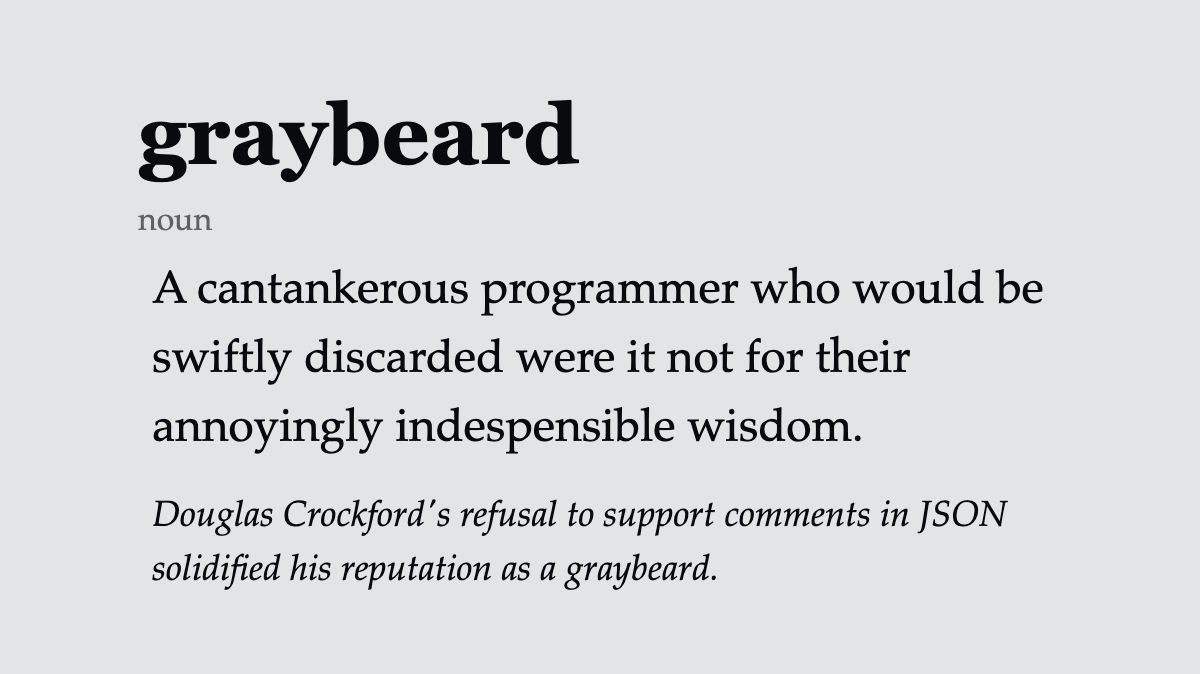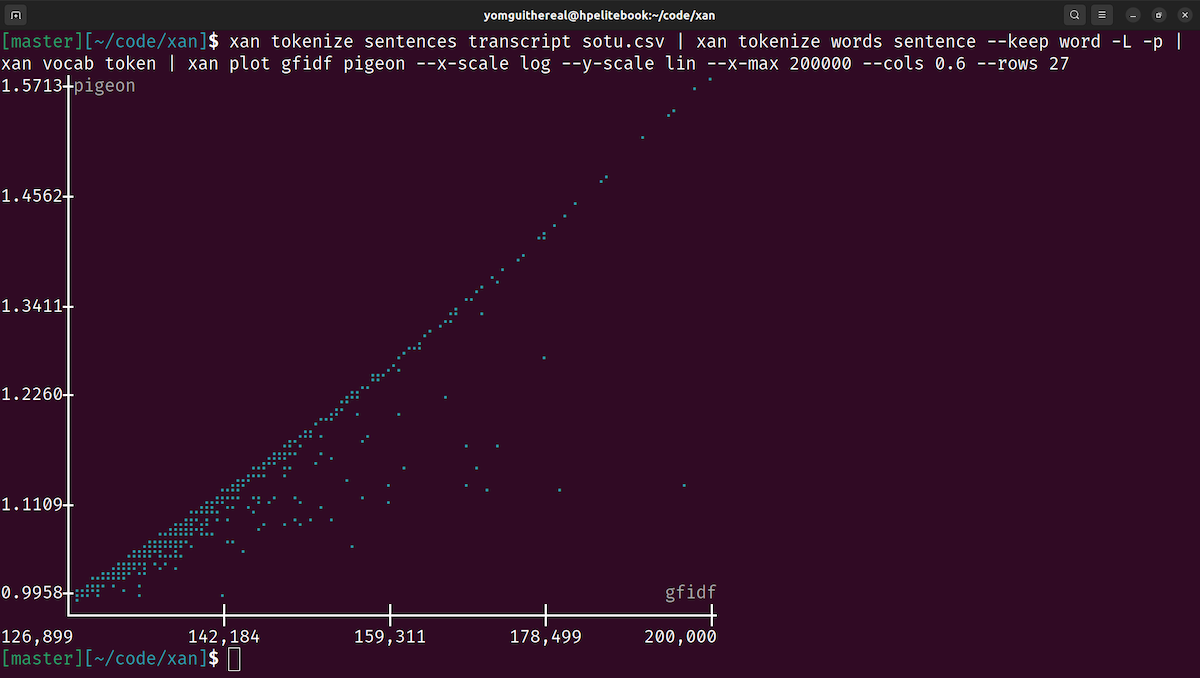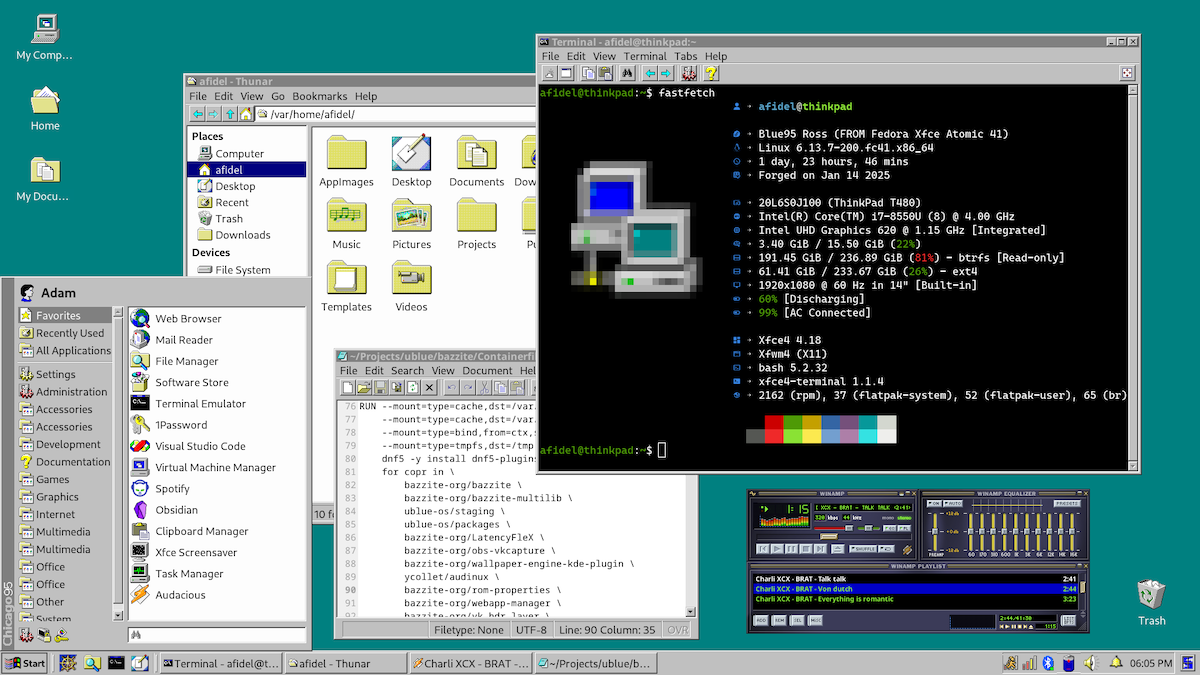Changelog News
Developer news worth your attention
Jerod here! 👋
Here’s a perfectly joyous use of tech: the jumbotron operator for the Indiana Pacers adds a “crying” filter to visiting Lakers fans’ faces during game breaks. The effect compounds as the Lakers fans begin to laugh along, giving the appearance of uncontrolled sobbing. You just gotta see it for yourself.
Ok, let’s get into the news.
🧑🌾 The idealization of farming by tech
In a #longpost, Theodore Morley wonders why we tech workers so frequently point our wanderlust toward hands-on trades:
Why does everyone who sits behind a computer long to be out in the fields or workshops? Is this specific to some subgroup in tech that I happen to cross paths with regularly, or is it a broader modern ennui?
Theodore grew up working on a farm, so his desire to escape manual labor so he could be “getting paid to sit in an air conditioned office” make him puzzled by our seemingly collective desire to move the opposite direction.
Why would people who are so comfortable, whose job was to me a lifelong goal, want to do exactly what I worked so hard to move away from? I suspect the answer is tied up in the nature of our work in the modern world, as well as in the inspection of who has been mythologized in American history.
An enjoyable deep dive follows, but I believe the old adage explains this phenomenon well: we always think the grass is greener on the other side, even though we get to specify the exact RGB values of our digital grass… it pales in comparison to its natural analog.
☝️ Know this before choosing Next.js
Eduardo Bouças (who works at Netlify, a Vercel competitor, so keep that in mind):
There is nothing wrong with a company profiting from an open-source software it created, especially when that helps fund the development of the project. In fact, there are plenty of examples of that model working successfully in our industry.
But I think that can only work sustainably if the boundaries between the company and the open-source project are abundantly clear, with well-defined expectations between the maintainers, the hosting providers and the users about how and where each feature of the framework can be used.
I want to explain why I don’t think this transparency exists today.
My goal is not to stop anyone from using Next.js, but to lay out as much information as possible so developers and businesses can make an informed decision about their technology stack.
This post was prompted by how Vercel recently handled a critical security vulnerability with Next.js, which Eduardo describes as “so poor, reckless and disrespectful to the community that it has exacerbated my concerns about the governance of the project.”
He lists three facts that give him pause regarding the project:
- No adapters
- No official serverless support
- Vercel-specific code paths
🧙 xan is the CSV magician
xan is a command line tool that can be used to process CSV files directly from the shell.
It has been written in Rust to be as fast as possible, use as little memory as possible, and can easily handle very large CSV files (Gigabytes). It is also able to leverage parallelism (through multithreading) to make some tasks complete as fast as your computer can allow.
It can easily preview, filter, slice, aggregate, sort, join CSV files, and exposes a large collection of composable commands that can be chained together to perform a wide variety of typical tasks.
This tool looks super handy for anyone who works with CSV files regularly. It even has its own expression language so you can perform complex tasks. Oh, and its terminal support is on point.
💰 Heroku plants new roots with Fir
Thanks to Heroku for sponsoring Changelog News
The next generation of Heroku is called Fir, and it’s being built on open source standards and cloud native technologies like the Open Container Initiative (OCI), Cloud Native Buildpacks (CNBs), OpenTelemetry, and Kubernetes (K8s).
This next technology stack represents the next decade and beyond for Heroku while building on their core principle: maximize developer productivity by minimizing distractions
Here’s what Terence Lee has to say about Fir:
Fir is still the Heroku you know and love. It’s rooted in the world renowned developer experience while built on a bedrock of security and stability. We achieve this by offering seamless functionality out of the box with the flexibility to customize as needed. In today’s complex development landscape, minimizing cognitive load is crucial. This allows you to focus on what truly matters: delivering value to your customers.
🥛 What we can learn from Milk Kanban
Pawel Brodzinski takes us back to Kanban’s roots and original purpose:
In its original meaning, Kanban represented a visual signal. The thing that communicated, well, something. It might have been a need, option, availability, capacity, request, etc.
In our Kanban systems, the actual Kanban is a sticky note…
It represents work, and given its closest environment (board, columns, other stickies, visual decorators), it communicates what needs, or needs not, to be done.
A visual signal all the way.
He then tells a story of how his office mate, Kasia, designed a perfectly simple Kanban system for milk inventory. It’s a good example with an even better lesson.
🫥 There is no vibe engineering
Sergey Tselovalnikov weighs in on “vibe coding” –the tech industry’s buzzword de jour (and quite honestly one of my favorite terms of late):
The term caught on and Twitter quickly flooded with posts about how AI has radically transformed coding and will soon replace all software engineers. While AI undeniably impacts the way we write code, it hasn’t fundamentally changed our role as engineers. Allow me to explain.
Sergey’s overarching point is one Amal Hussein and I agreed about on Changelog & Friends last week: vibe coding as a practice is here to stay, but whether or not it will every produce production-grade applications… that’s still a big question mark.
It is possible that there’ll be a future where software is built from vibe-coded blocks, but the work of designing software able to evolve and scale doesn’t go away. That’s not vibe engineering – that’s just engineering, even if the coding part of it will look a bit different.
Agree or disagree?
🎙️ Of agents & agency
Long-time JS Party panelist Amal Hussein joins me to catch up on her career path, to opine on the viability of agentic coding, to feel all the feelings that AI brings out of us as developers, and to share something new in her life that changes everything. VIDEO
🤫 Stamina is a quiet advantage
Stamina isn’t just for marathon runners. It’s for any endeavor where you’d benefit from being able to “sustain focused effort despite pain or discomfort.”
It’s the ability to chip away at goals despite a lack of visible progress. To hold focus and presence in a world incentivized to distract you. To stay patient. To be on time. To push through difficult material. To follow instructions or proceed without them. To keep an open mind and be willing to renew your perspective.
If there’s any single trait/quality that contributes to our (moderate) success here at Changelog, I’d have to say it’s our stamina. We just keep showing up every day. Recording conversations. Publishing newsletters. On the good days. On the bad days. Doing our thing. And that’s made all the difference…
❄️ Apple needs a Snow Sequoia
Timothy R. Butler sold me on this article with the headline alone. The “no new features” Snow Leopard was my favorite macOS of all times. If I were in charge of the operating system’s direction*, I’d adopt Intel’s tick-tock cadence. The tick would be a “big new features” release and the tock would be a “no new features” release. Anywho, here’s Timothy:
The latest releases — MacOS Sequoia and iOS/iPadOS 18 — are screaming for such a reset. Yes, they work and are still smoother and less glitchy than Windows 11, but they feel like software developed by people who don’t actually use that software. In the 22 years since I became a “switcher”, this is the worst state I can remember Apple’s platforms being in.
(*Maybe that’s why I’m not in charge of the operating system’s direction…)
💰 Now available: Depot Registry
Thanks to Depot for sponsoring Changelog News
Depot has revamped their ephemeral Docker registry and promoted it to a full product.
Depot Registry is a new, faster, and more feature-rich registry that we’re excited to keep iterating on. It’s available to all users starting today. Here are a few of the key features of Depot Registry.
The announcement post describes in detail these four key features:
- Enhanced performance
- Registry dashboard
- Image retention
- Automatic integration with Depot GitHub Actions runners
If you’re new to Depot, you can get started with Depot Registry by signing up for a free trial.
📠 A desktop from a bygone era
Blue95 is a modern, lightweight desktop experience reminiscent of a bygone era of computing. Based on Fedora Atomic Xfce with the Chicago95 theme.
📐 Don’t forget your (un)ordered list
- Cursor for 3D Modeling
- Playwright Tools for MCP
- A love letter to the CSV format
- Postgres gets its own language server
- The Software Engineering Identity Crisis
- linkhut: an OSS social bookmarking service
- The role of developer skills in agentic coding
- Tracing the thoughts of a large language model
- Coordinating the Super Bowl’s visual fidelity with Elixir
- How to report a security issue in an open source project
- Google will move Android AOSP development behind closed doors
- FBI raids home of computer scientist who has gone incommunicado
- A clean, minimal YouTube frontend without all the ads and whistles
- Recruiter accidentally emailed me secret internal selection guidelines
📚 The Developer’s Dictionary™️
You either die a hero, or you live long enough to see yourself become a …

That’s the news for now! We have some great episodes coming up this week:
- Wednesday: Joran Dirk Greef, creator of TigerBeetle
- Friday: Adam and I discuss the latest tech news
Have a great week, forward this to a friend who might dig it & I’ll talk to you again real soon. 💚
–Jerod


